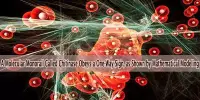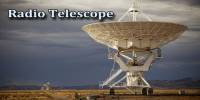Consider a home computer that is a million times quicker than the priciest hardware available. Imagine that amount of computer power becoming the norm for the industry. Researchers from the University of Arizona are working to make that ideal a reality by using light-based optical computing, which is a vast improvement over the transistors now used to power the planet.
“Semiconductor-based transistors are in all of the electronics that we use today,” said Mohammed Hassan, assistant professor of physics and optical sciences. “They’re part of every industry from kids’ toys to rockets and are the main building blocks of electronics.”
In February, the scientific paper “Ultrafast optical switching and data encoding on synthesized light fields” was published in Science Advances under Hassan’s leadership.
UArizona physics postdoctoral research associate Dandan Hui and physics graduate student Husain Alqattan also contributed to the article, in addition to researchers from Ohio State University and the Ludwig Maximilian University of Munich.
Electronic devices use semiconductors to switch electrical signals supplied via microwaves to either permit or prohibit the passage of electricity and data, denoted as either “on” or “off.”
Hassan said, “the future of electronics will be based instead on using laser light to control electrical signals, opening the door for the establishment of ‘optical transistors’ and the development of ultrafast optical electronics.”
This new advancement would also allow the encoding of data on ultrafast laser pulses, which would increase the data transfer speed and could be used in long-distance communications from Earth into deep space. This promises to increase the limiting speed of data processing and information encoding and open a new realm of information technology.
Professor Mohammed Hassan
The focus of technical development since the 1940s, when semiconductor transistors were created, has been on accelerating the rate at which electric signals, measured in hertz, may be generated. The world’s fastest semiconductor transistors, according to Hassan, can run at a rate of more than 800 gigahertz. At such frequency, data transfer is measured in picoseconds, or one trillionth of a second.
Since the invention of the semiconductor transistor, computer processing power has steadily increased. However, according to Hassan, one of the main issues with developing faster technology is that the heat produced by continuously adding transistors to a microchip will eventually require more energy to cool than can pass through the chip.
In their article, Hassan and his collaborators discuss using all-optical switching of a light signal on and off to reach data transfer speeds exceeding a petahertz, measured at the attosecond time scale. An attosecond is one quintillionth of a second, or one million times faster than the fastest semiconductor transistors, at which point data may be sent.
Hassan and his co-authors were able to register the on and off signals from a light source occurring at a scale of billionths of a second, despite the fact that optical switches have already been demonstrated to attain information processing speeds faster than semiconductor transistor-based technology. This was done by utilizing a feature of fused silica, a glass that is frequently used in optics.
Fused silica may change its reflectivity instantly, and Hassan and his team were able to detect changes in a light’s signal at the attosecond time scale by employing ultrafast lasers. The research also showed that data in the form of “1” and “0” which stand for on and off can be transferred via light at speeds that were previously unthinkable.
“This new advancement would also allow the encoding of data on ultrafast laser pulses, which would increase the data transfer speed and could be used in long-distance communications from Earth into deep space,” Hassan said. “This promises to increase the limiting speed of data processing and information encoding and open a new realm of information technology.”
















